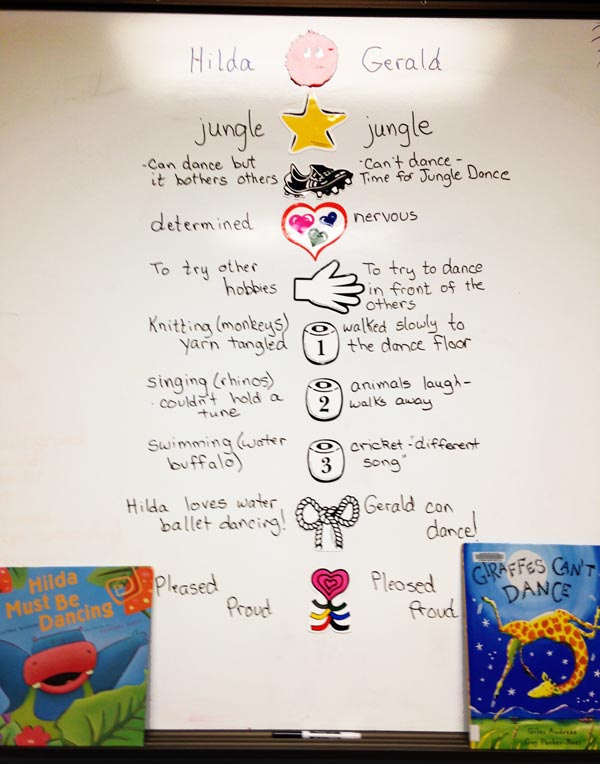Secure Checkout. FREE SHIPPING for Continental U.S. Orders over $60.
Menu
-
- Home
-
About Us
-
The Approach
-
Linking Language & Literacy
-
MindWing Learning
-
Learning Resources
-
SHOP
-
Blog
-
- About MindWing
- Our People
- Contact Us
- Your Account
- Login
-
United States (USD $)

Secure Checkout. FREE SHIPPING for Continental U.S. Orders over $60.
“Hilda Must Be Dancing” and “Giraffes Can’t Dance” — Narrative Retellings
by Sheila Zagula October 29, 2015 1 min read
 These lessons would occur over a period of several days. I usually begin with Hilda Must Be Dancing, but it doesn’t matter which story you choose to work on first.
These lessons would occur over a period of several days. I usually begin with Hilda Must Be Dancing, but it doesn’t matter which story you choose to work on first.
Read the story to the children. Present a map to the children of a complete episode with the icons going down the center. You may use either chart paper or use the magnets on a white board, as shown.

After reading one of the stories, map it out, icon by icon, engaging the children in the process. Keep the chart up and model retelling the story using your SGM® Teacher Marker. You may also want to have available pictures that correspond to the selections, similar to the one presented in our free lesson plans,  The Clothesline Activity. This provides extra scaffolding for those students who may need it.
The Clothesline Activity. This provides extra scaffolding for those students who may need it.
Then, ask the children to retell the story using their SGM® Student Markers with a partner. Ask for a volunteer to retell the story to the others as each child follows along using his/her student marker, touching each component.
Within the next few days, read the other story and follow the same procedure as above, using the chart paper or white board to write the notes for the complete episode.

This process is a powerful way to help reinforce story grammar elements and oral retellings.
Our next Blog will feature the Compare/Contrast Expository Map to show comparisons between these two stories. Until then… keep on dancing!
Sheila Zagula
Sheila Zagula works with MindWing Concepts in product development, drawing on her expertise and talents as well as many years of implementing the Story Grammar Marker® and related materials. Her teaching career spans thirty-eight years, most recently as literacy coach in the Westfield Massachusetts Public School System. Sheila has experience as an early childhood educator, a teacher of children with special needs, and a collaborative instructor within an inclusion framework serving children in grades K-5.
Leave a comment.
Comments will be approved before showing up.
